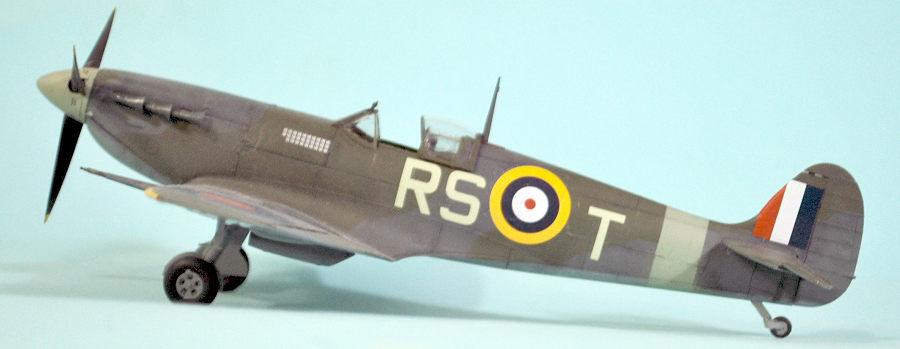
Eduard 1/48 Spitfire VB
| KIT #: | 11153 |
| PRICE: | @$98.00 |
| DECALS: | Ten options |
| REVIEWER: | Tom Cleaver |
| NOTES: | Victory Productions decals |

| HISTORY |
The Mk V was a Mk I airframe strengthened tp take the Merlin 45 engine, which delivered 1,440 hp, and incorporated a new single-speed single-stage supercharger. The carburetor was also modified to allow zero gravity maneuvers without fuel flow cutoff. Supermarine began delivery of the Mk V in early 1941 as the Mk. Va (Type 331) of which 94 were constructed with the original eight-gun wing, and the Mk Vb (Type 349) armed with two 20mm Oerlikon cannon; the Vb became the main production version.
Over the course of production, changes were incorporated, some of which became standard on all later Spitfires. Starting in early 1941 the round section exhaust stacks were changed to a fishtail type, marginally increasing exhaust thrust. After some initial problems with the Mk I oil coolers, a larger one that could be recognized by a deeper housing with a circular entry was fitted. Metal ailerons were added in May 1941, improving roll and overall maneuverability. In early 1942, a "blown" cockpit canopy was introduced to increase the pilot's head-room. Many mid to late production Vbs used the improved windscreen the internally-mounted armored glass windscreen. Because this was taller than that of the earlier version, canopies were not interchangeable and could be distinguished by the wider rear framing used with the late-style windscreen. Different propellers were fitted, according to which factory built the airframe: Supermarine and Westland-manufactured Vbs used de Havilland constant speed props with narrow metal blades like the Mk I, while Castle Bromwich airplanes were fitted with either a wide-bladed Rotol constant speed propeller with metal blades 10 ft 9 in diameter, or a Rotol unit with “Jablo” (compressed wood) blades, The Rotol spinners were longer and more pointed than the de Havilland, increasing overall length by 3.5 in; they gave a modest increase in speed overr 20,000 ft and increased service ceiling. Many Spitfire Vbs were fitted with "gun heater intensifier" systems on the exhaust stacks, identified by a short tubular intake on the first stack and a narrow pipe into the cowling from the rear exhaust. The Mk V was the first Spitfire able to carry specially-designed slipper-type drop tanks.
Robert Stanford Tuck:
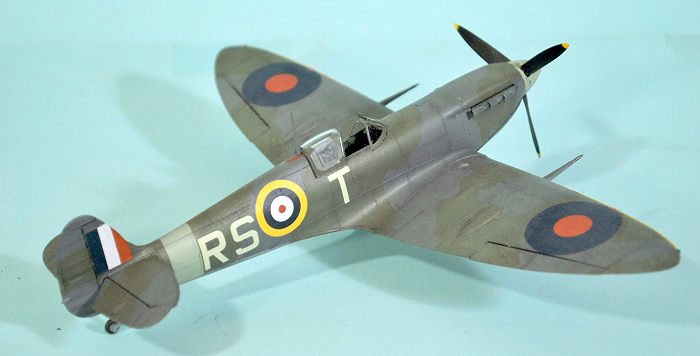 Robert Roland
Stanford Tuck joined the Royal Air Force in 1935 and first engaged in combat
during the Battle of France, over Dunkirk, claiming his first victories.
Robert Roland
Stanford Tuck joined the Royal Air Force in 1935 and first engaged in combat
during the Battle of France, over Dunkirk, claiming his first victories.
Tuck did not come naturally to flying; he was nearly “bowler-hatted” during primary training and only soloed after some 17 hours of instructions and two previous failed attempts.
Following flight training, Tuck joined 65 Squadron in September 1935 as an acting probationary pilot officer. He became a Pilot Officer (probationary) in September 1936 and confirmed permanent in early 1937 and was promoted to Flying Officer in September 1938.In 65 Squadron, he flew the Gloster Gauntlet and then the Gloster Gladiator. In January 1938, while practicing formation flying in a Gladiator over the town of Uckfield in East Sussex, Tuck was involved in a fatal mid-air collision with another pilot. He himself escaped by parachute, with two lost teeth and a severe cut to his cheek. In May 1940, he was posted to 92 Squadron, based at Croydon, as a flight commander flying Spitfires.
Tuck’s first combat came on May 23, 1940, covering the Dunkirk evacuation. Squadron leader Roger Bushell was shot down and Tuck assumed command. By June 11, he was the first Spitfire ace, and was awarded the DSO.His success continued during the Battle of Britain, though he was forced to bail out of his Spitfire on August 18 when he was shot down by a Bf-109E of JG 26. On August 25, he was hit by the rear gunner of a Do-17Z that put his engine out over the Channel. He managed a forced landing ashore.
On September 11, 1940, he was promoted to Squadron Leader and assigned to command 257 Squadron, flying Hurricanes. He continued to score, with his last two Battle of Britain victories on October 28, 1940.
On September 23, 1940, Tuck pursued a Bf-109E-7 over the Channel to the Cap Griz Nez area near Calais, where he shot down the German fighter with the pilot taking to his parachute. The German pilot is believed to be the future ace Hans-Joachim Marseille. Tuck was credited with the destruction of W.Nr. 5094, whose pilot, Marseille, was the only recorded German airman rescued by an He-59 in that location on that date. Tuck's official claim was for a Bf 109 destroyed off Griz Nez at 0945 — the only pilot to submit a claim that day in that location.
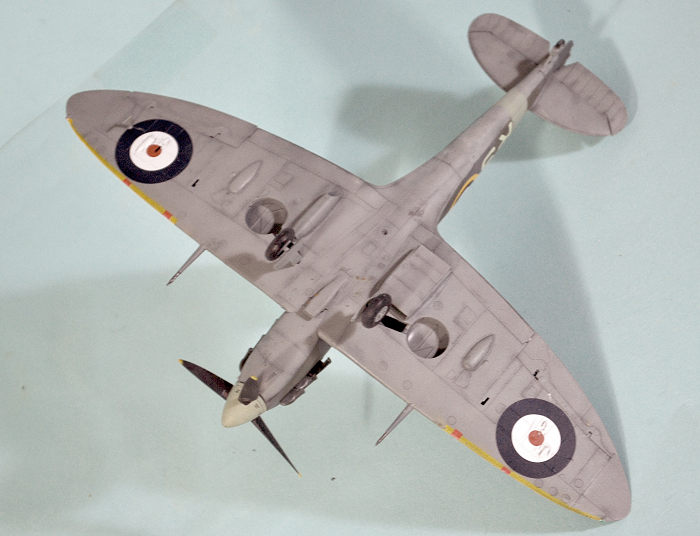 Tuck led 257
Squadron until July, 1941, when he was promoted to acting wing commander and
appointed wing leader at RAF Duxford where he led fighter sweeps into northern
France. After a brief trip to America in the fall of 1941 with Adolph Malan and
Harry Broadhurst to evaluate lend-lease aircraft and train American pilots, he
returned to a posting at RAF Biggin Hill as wing leader.
Tuck led 257
Squadron until July, 1941, when he was promoted to acting wing commander and
appointed wing leader at RAF Duxford where he led fighter sweeps into northern
France. After a brief trip to America in the fall of 1941 with Adolph Malan and
Harry Broadhurst to evaluate lend-lease aircraft and train American pilots, he
returned to a posting at RAF Biggin Hill as wing leader.
Tuck was shot down on January 28, 1942 over Northern France while on a low-level "Rhubarb" mission. His Spitfire was hit by enemy ground-based flak near Boulogne forcing him to crash land, he was captured by the German troops he had been firing upon just before his aircraft was hit.
Tuck was first sent to Stalag Luft III at Sagan, where he participated in some of the early planning for the Great Escape but was moved to Belaria, a subcamp of Stalag Luft III before the mass breakout happened in March 1943. He remained at Belaria until advancing Russian forces forced the Germans to evacuate in March 1945. He escaped along with the Polish RAF pilot Zbigniew "Zbishek" Kustrzyński on February 1, 1945 by arranging to be left behind in a barn during the westward march. Tuck had learned Russian from his childhood nanny, which was crucial as he spent some time fighting alongside the Russian troops who found him until he managed to get to the British Embassy in Moscow.
| THE KIT |
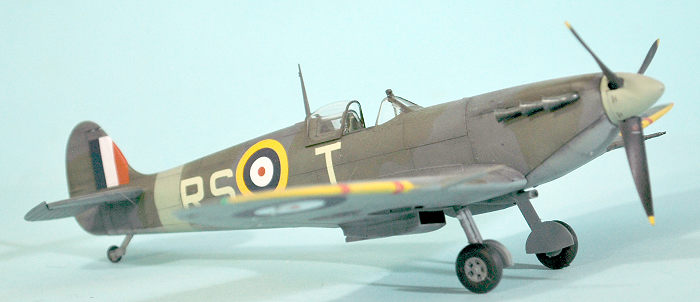 The Spitfire Vb
(early) is one of the options in “Spitfire Story: the Sweeps.” This is are the
second early Spitfire Vb double kit combo. It includes three fuselages - two in
“early” configuration that uses the windshield with external armor glass, and
one to use the later windshield with internal armor glass. There are two sets of
wings - one with the earlier symmetrical underwing ammo drum fairing, one with
the later assymetrical fairing. You need to pay attention to which version you
will use when you choose the markings you want. The kit includes no less than
ten sets of markings options, including airplanes in Dark Earth/Dark Green/Sky,
Mixed Grey/Dark Green/Sea Grey Medium, and the final Ocean Grey/Dark Green/Sea
Grey Medium schemes.
The Spitfire Vb
(early) is one of the options in “Spitfire Story: the Sweeps.” This is are the
second early Spitfire Vb double kit combo. It includes three fuselages - two in
“early” configuration that uses the windshield with external armor glass, and
one to use the later windshield with internal armor glass. There are two sets of
wings - one with the earlier symmetrical underwing ammo drum fairing, one with
the later assymetrical fairing. You need to pay attention to which version you
will use when you choose the markings you want. The kit includes no less than
ten sets of markings options, including airplanes in Dark Earth/Dark Green/Sky,
Mixed Grey/Dark Green/Sea Grey Medium, and the final Ocean Grey/Dark Green/Sea
Grey Medium schemes.
I chose to use the markings in the Victory Production Decals “Spitfire: Aces of the Empire” to do Bob Stanford-Tuck’s last Spitfire that he was shot down in.
| CONSTRUCTION |
Checking photos, I saw that this model would use the early fuselage with the external armor glass windshield; I guessed from the fact it was painted with Mixed Grey rather than Ocean Grey that it was an early Spitfire Vb with the symmetrical underwing bulge. It also used the Rotol prop with the longer pointed spinner.
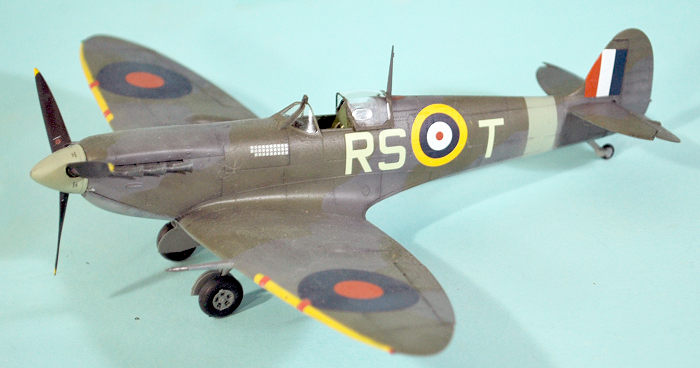 Remember that
the kit design is very precise, and ham-handedness will guarantee a
less-than-desired result. All sprue nibs need to be trimmed off and the mating
surface smoothed, and no paint on those surfaces. Take your time, follow the
instructions, and you will get a nice result.
Remember that
the kit design is very precise, and ham-handedness will guarantee a
less-than-desired result. All sprue nibs need to be trimmed off and the mating
surface smoothed, and no paint on those surfaces. Take your time, follow the
instructions, and you will get a nice result.
I deviate from Eduard’s assembly instructions by not completely assembling the wing separately and then mating it to the assembled fuselage. Rather, I assemble all the wheel well in the lower wing part, then I attach that to the assembled fuselage, getting a good tight fit to the fuselage fore and aft of the wing. Then I attach the upper wing, getting a good tight fit at the wing-fuselage joint, and then gluing the outer wing to the lower wing part. If you do it this way, there is no pushing and shoving to get a less-than-optimal fit, and no use of putty anywhere.
Of note, all Spitfire Vs used the paper laminate seat, which is painted brown, with a black leather back pad.
| COLORS & MARKINGS |
Tuck’s Spitfire was one
of those early production airplanes that originally came out of the factory in
Dark Earth/Dark Greey/sky camouflage, that were repainted in August 1941. Since
Ocean Grey - the color that replaced Dark Earth - was in short supply, squadrons
were ordered to use “Mixed Grey,” created by using Night and White. The results
varied from a light grey to a very dark grey.
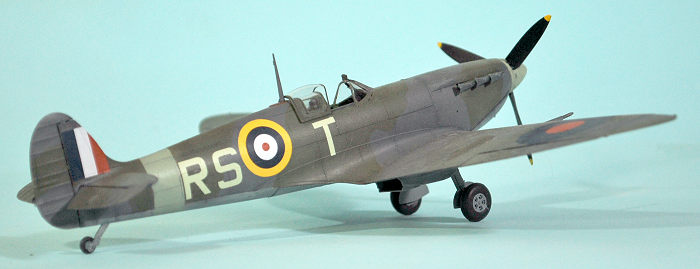 Photos of Tuck’s
Spitfire have a dark upper surface with little differentiation between the upper
colors. I took that to mean I wanted a darker “Mixed Grey,” which I created with
Tamiya XF-24 Dark Grey and XF-2 White. I used Tamiya’s RAF colors, XF-81 RAF
Dark Green and XF-83, Sea Grey Medium. Since this airplane was likely painted
with brushes because it had a hard edge between the camouflage colors, I
airbrushed the lower color, masked off the fuselage demarcation,airbrushed the
“Mixed Grey” and masked it, then airbrushed the Dark Green. I then masked off
the area for the yellow wing leading edge and shot that.
Photos of Tuck’s
Spitfire have a dark upper surface with little differentiation between the upper
colors. I took that to mean I wanted a darker “Mixed Grey,” which I created with
Tamiya XF-24 Dark Grey and XF-2 White. I used Tamiya’s RAF colors, XF-81 RAF
Dark Green and XF-83, Sea Grey Medium. Since this airplane was likely painted
with brushes because it had a hard edge between the camouflage colors, I
airbrushed the lower color, masked off the fuselage demarcation,airbrushed the
“Mixed Grey” and masked it, then airbrushed the Dark Green. I then masked off
the area for the yellow wing leading edge and shot that.
The airplanes that were repainted like this did not have stencils reapplied, so all I had to use was the kit decals for the national insignia, and the VPD decals for Tuck’s initials and his victory panel.
Being the wing leader’s airplane, it was well-maintained and pretty clean, Photos don’t show dings, so I left that.
| CONCLUSIONS |
It’s an Eduard Spitfire. With attention and care, you get a great result. I now have a model of an airplane flown by one of the nicest aces I was lucky to meet. Highly recommended.
Tom Cleaver
26 May 2022
Copyright ModelingMadness.com. All rights reserved. No reproduction in part or in whole without express permission.
Review Kit courtesy of Eduard.
If you would like your product reviewed fairly and fairly quickly, please contact the editor or see other details in the Note to Contributors.